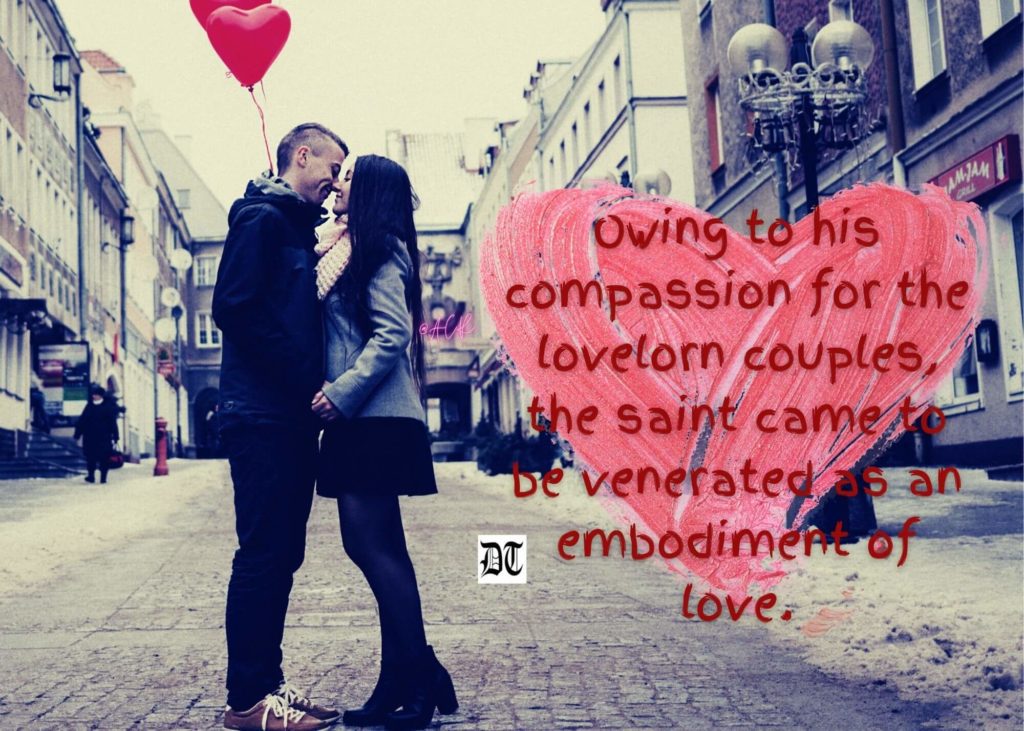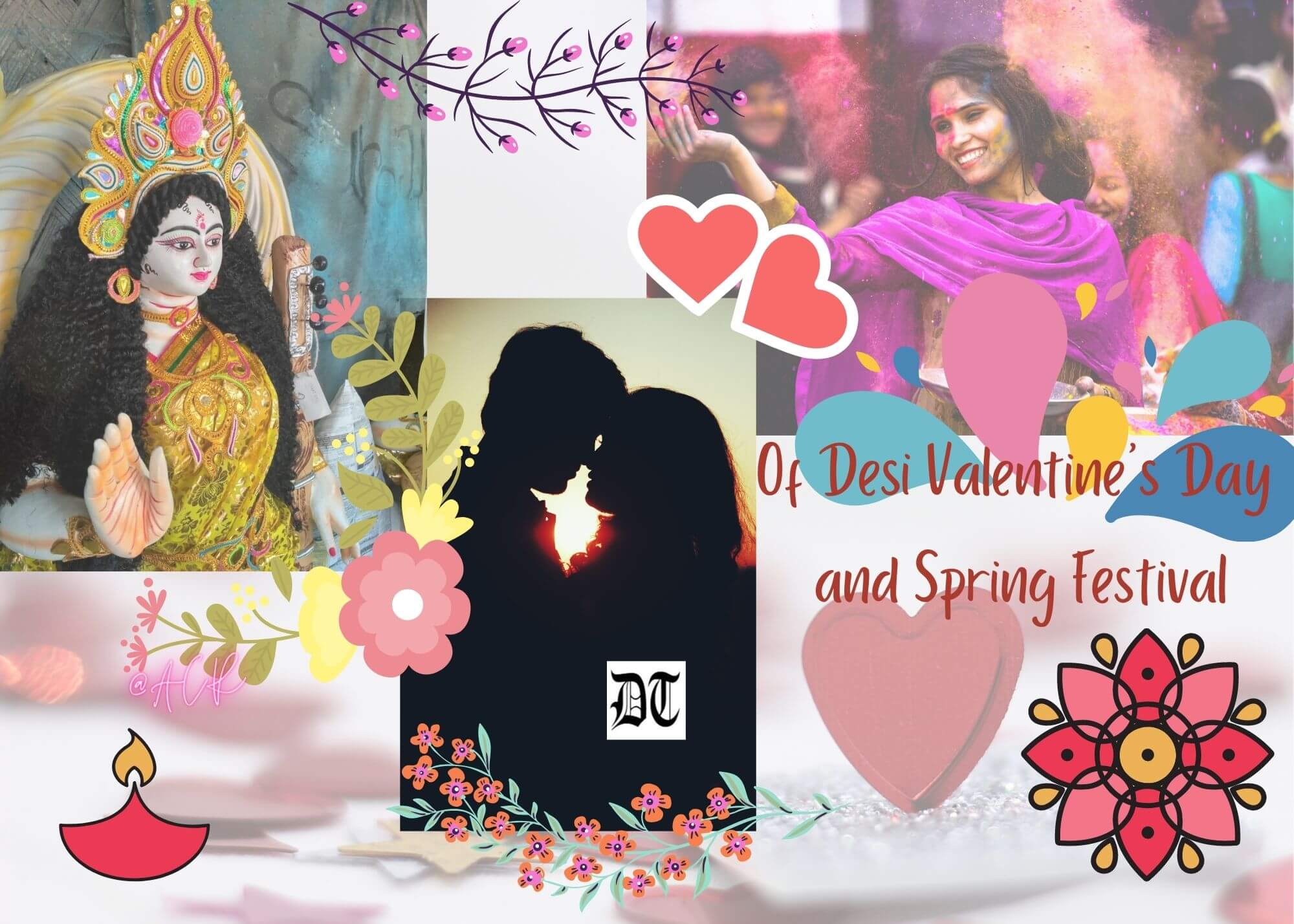Reading Time: 3 minutes
Ruchira narrates the tale of Valentine’s Day and talks of Holi and Saraswati Puja, the two desi Spring festivals. All three have the common root of fertility worship. An exclusive for Different Truths.
Come February and youth in the entire country are agog with the festive spirit of Valentine’s Day. In fact, it is hard to ascertain whether this happens to be a colonial hangover or an impact of Americanism that has become rampant across the globe in recent decades. I will wager you anything that the bulk of these young things are probably unaware of the origin and inner significance of the festival. It is the spree the mad frenzy that lures them to celebrate the festival. Period.
Let us now take a cursory look at the antecedents of Valentine’s Day. The festival most likely had its origin in the Roman festival of Lupercalia, which occurred in mid-February every year.
Let us now take a cursory look at the antecedents of Valentine’s Day. The festival most likely had it origin in the Roman festival of Lupercalia, which occurred in mid-February every year. It was essentially meant to celebrate the onset of Spring. Interestingly, it also included fertility besides pairing off young maidens with gallant youths by means of a lottery. However, by the end of the 5th century, the incumbent Pope Gelasius I replaced Lupercalia with St. Valentine’s Day.
The true identity of the aforementioned saint is still shrouded in mystery, though it is believed that a priest by this name had incurred the wrath of the emperor Claudius II Gothicus and consequently put to death around 270 AD Why? Because during a prison stint he had developed a romantic alliance with his jailer’s daughter, rather audaciously he had even dispatched a letter signed “from your Valentine” to the lady in question. Another version says that St. Valentine defied the emperor’s orders and secretly married young women and their respective lovers (married males were not enlisted in the army) in a bid to save the latter from the hazards of wars. Owing to his compassion for the lovelorn couples, the saint came to be venerated as an embodiment of love. That is why his feast day is associated with emotions and sentiments linked with love.

Ordinary folks have tarnished the sublime spirit of the occasion, instead lending it a pedestrian, vulgar touch.
The ground reality unfortunately is starkly different. Ordinary folks have tarnished the sublime spirit of the occasion, instead of lending it a pedestrian, vulgar touch. On that day, boys and girls of all ages, shapes, and sizes spill out onto the streets of cities and towns, clad in snazzy dresses, painting the town in loud, garish hues; girls may be visible in every nook and corner, bus stops, car parking, and what have you – clutching red roses and greeting cards – waiting for casual valentines on vrooming motorbikes or swanky cars, getting picked up for blind dates ….(God knows what else!)
Having said that, I don’t deny that discerning individuals with good tastes don’t observe the day in a dignified, sober manner. Sure, they do. One must also bear in mind that celebrations must not be confined to love between opposite sexes alone. Anybody could be Valentines: aunt-niece, grandparent-kid, uncle-nephew, the chubby pre-teen boy-next-door, and yes even your pet dog or cat! After all, it is love that counts. Nothing else besides.
It would not be wrong to compare Valentine’s Day with the indigenous Vasantotsav/Spring festival as depicted in the ancient sacred texts, legends, and mythology.
It would not be wrong to compare Valentine’s Day with the indigenous Vasantotsav/Spring festival as depicted in the ancient sacred texts, legends, and mythology. We Indians still celebrate this as Holi. Indeed, Holi arrives close on the heels of Valentine’s Day, usually in early or mid-March.
By the way, the enterprising younger generations of Bengalis (more so within the state) have evolved their own brand of Valentine’s Day? They observe it on Basant Panchami or Saraswati Puja, a day which falls in February every year. One may feel befuddled upon learning this since Saraswati is the deity of learning, wisdom, music, fine arts albeit not of love or romance (à la Aphrodite or Venus in Greek/Roman mythology). There may be several reasons for this. One, the two days occur almost simultaneously. Two, the subcontinent has a short-lived spring – an ideal time for romance – after which torrid summer sets in. Make hay while the sun shines go the adage. Thirdly, as the youngsters (read students) are expected to be worshiping ‘their deity’ on this day, parents tend to slacken their vigil on their wards. Therefore, lovers can easily sneak away from milling crowds, and prying eyes and have a gala time all by themselves.
Visuals by Different Truths, Picture Design: Anumita Roy














